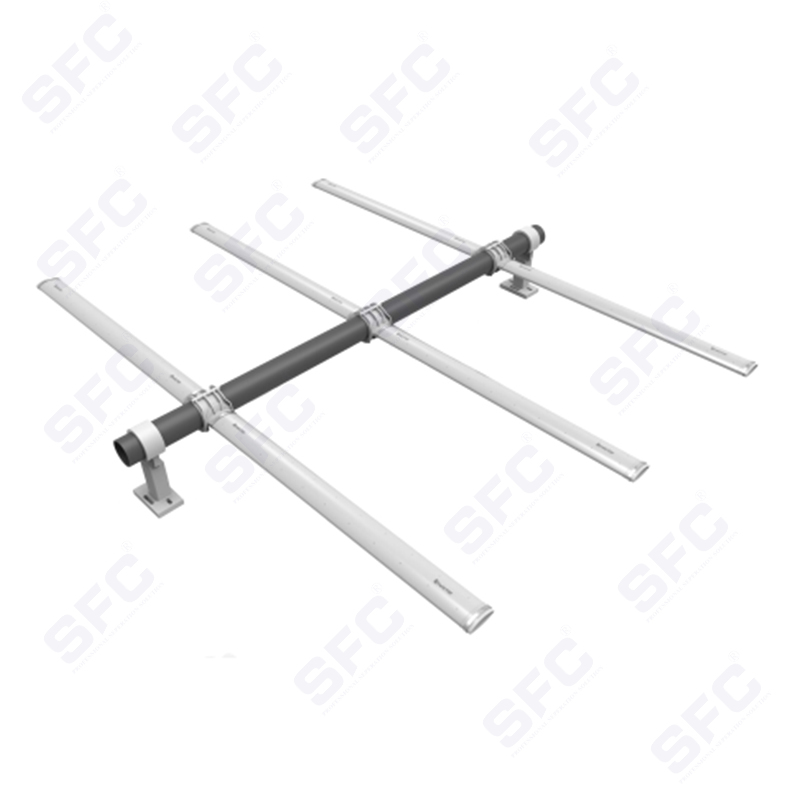Water Treatment Fine Bubble Diffuser: Features and Applications in Modern Wastewater Management
In modern wastewater treatment, efficient aeration is essential for maintaining optimal biological treatment processes. One of the most effective technologies used for aeration is the fine bubble diffuser. This device plays a critical role in delivering oxygen to microorganisms in wastewater treatment plants, promoting the breakdown of organic pollutants. By ensuring that oxygen is distributed evenly throughout the water, fine bubble diffusers improve the overall efficiency of the treatment process.
The defining feature of a fine bubble diffuser is the small size of the bubbles it produces, typically in the range of 0.5 to 2 millimeters in diameter. Smaller bubbles have a larger surface area relative to their volume, which increases the efficiency of oxygen transfer from the bubble to the surrounding water.
The fine bubbles released by the diffuser have a greater contact time with the water before rising to the surface, allowing more oxygen to dissolve into the water. This enhances the overall efficiency of the aeration process, providing microorganisms with the oxygen they need to thrive and break down organic contaminants.
Fine bubble diffusers are designed to distribute air uniformly throughout the aeration tank. This even distribution ensures that all areas of the tank receive the necessary oxygen, improving the effectiveness of the biological treatment process and preventing dead zones where oxygen might be insufficient.

Modern fine bubble diffusers are made from durable materials like EPDM (ethylene propylene diene monomer) or silicone, which are resistant to wear and chemical degradation. As a result, they require less maintenance and have a longer operational lifespan compared to other aeration systems, such as mechanical aerators.
Due to their high oxygen transfer efficiency, fine bubble diffusers typically require less energy to operate than other aeration methods. Their ability to deliver oxygen more effectively at lower air flow rates translates to reduced energy consumption, making them a cost-effective solution in large-scale wastewater treatment plants.
One of the most common applications of fine bubble diffusers is in the activated sludge process, where microorganisms use oxygen to decompose organic matter in wastewater. The fine bubbles supply the necessary oxygen to these microorganisms, facilitating the treatment of large volumes of wastewater in a cost-effective and efficient manner.
Fine bubble diffusers are also widely used in processes aimed at removing nutrients like nitrogen and phosphorus from wastewater. These nutrients, if left untreated, can cause environmental issues such as eutrophication in receiving water bodies. Fine bubble diffusers help optimize the conditions for nitrification and denitrification, as well as the removal of phosphates, ensuring compliance with strict environmental discharge standards.
In lagoon-based treatment systems, fine bubble diffusers are used to provide aeration to the water in the lagoon, encouraging the growth of aerobic bacteria that break down organic pollutants. This method is widely used in smaller or decentralized wastewater treatment plants, where lagoon-based systems are more cost-effective than large, centralized plants.
Although anaerobic digestion is primarily an oxygen-free process, fine bubble diffusers are sometimes used in hybrid systems that combine both aerobic and anaerobic processes. By introducing oxygen when necessary, fine bubble diffusers support the overall efficiency of the biogas production process, which is a key aspect of sustainable wastewater treatment.
In membrane bioreactor systems, fine bubble diffusers are used to supply oxygen to the aerobic zone, enhancing the biological degradation of contaminants while maintaining the necessary conditions for the membrane filtration process. MBRs are becoming increasingly popular due to their compact size and high effluent quality, and fine bubble diffusers play a crucial role in ensuring their effectiveness.
Fine bubble diffusers improve oxygen transfer rates, ensuring more efficient breakdown of organic contaminants and reducing the time required for treatment.
By improving the oxygen transfer efficiency, fine bubble diffusers lower the energy needed for aeration, leading to significant cost savings over time.
The durability and low maintenance requirements of fine bubble diffusers make them a reliable choice for long-term operations, reducing downtime and maintenance costs.
The efficient removal of organic pollutants and nutrients from wastewater helps prevent environmental pollution and supports regulatory compliance, contributing to cleaner water bodies and improved ecosystems.
















 English
English Español
Español
